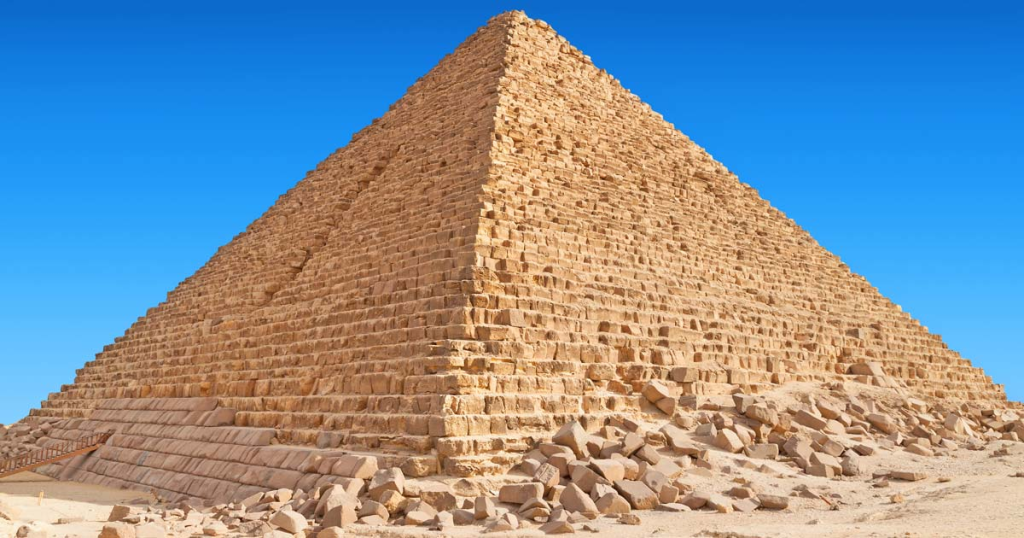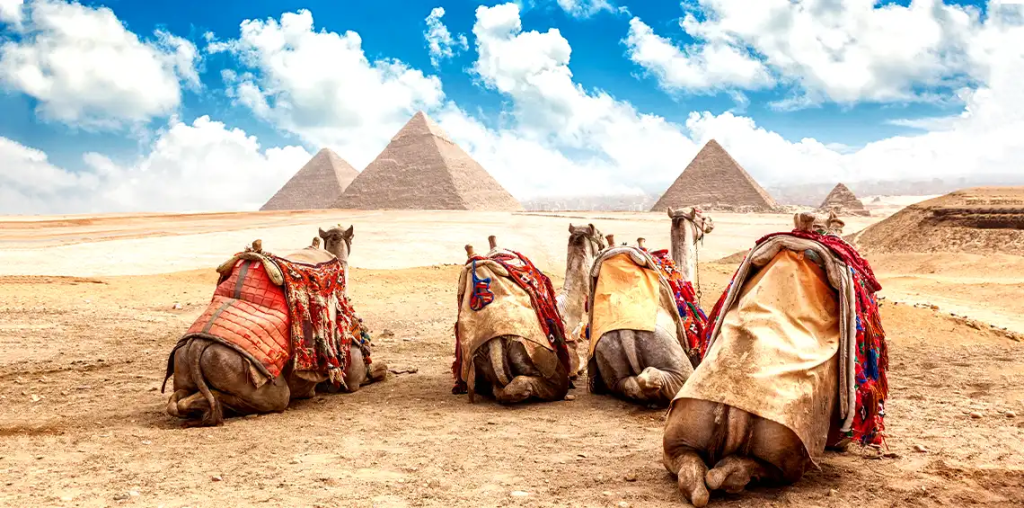
The Pyramids of Egypt have long captured the world’s fascination, standing as enduring symbols of ancient civilization’s architectural and engineering prowess. These majestic structures have held countless secrets within their stone walls for millennia, prompting experts and enthusiasts alike to unravel their mysteries. In this authoritative blog post, we will delve into 10 intriguing mysteries and facts surrounding the enigmatic pyramids, shedding light on their historical significance and the awe they continue to inspire.
1. Precise Alignment with the Stars: One of the most captivating aspects of the pyramids is their extraordinary alignment with celestial bodies. The Great Pyramid of Giza, for instance, aligns almost perfectly with the North Pole, and its sides point toward the four cardinal directions. Additionally, it is believed that the arrangement of the pyramids mirrors the alignment of the stars in Orion’s Belt, a phenomenon that has fueled theories of a connection between ancient Egyptians and extraterrestrial intelligence.
2. Construction Techniques: Despite being erected over 4,500 years ago, the methods used to construct the pyramids still elicit debate. The colossal stones, some weighing up to 80 tons, were transported across vast distances and stacked with remarkable precision. The exact techniques employed remain shrouded in mystery, as there is limited documentation from the time. Some theories propose the use of ramps, while others suggest intricate systems of levers and counterweights.
3. Labor Force and Organization: The scale of labor required for pyramid construction raises questions about the organization of the workforce. While the traditional belief is that the pyramids were built using slave labor, recent archaeological findings hint at a more skilled and possibly even a salaried workforce. These discoveries challenge our understanding of the social and economic dynamics of ancient Egypt.
4. Purpose of the Pyramids: The primary purpose of the pyramids was to serve as grand tombs for pharaohs and their consorts. The design and architecture were meticulously planned to ensure the safe passage of the deceased into the afterlife. However, the pyramids’ intricate chambers and corridors have led some researchers to propose additional functions, ranging from astronomical observatories to energy-generation devices.
5. Lost Knowledge of Construction: Interestingly, the knowledge and techniques required for pyramid construction seem to have vanished over time. Despite the subsequent construction of other large structures, such as cathedrals and castles, the precision and scale of the pyramids’ construction have not been replicated. This has led to speculation about whether ancient civilizations possessed advanced knowledge that has since been lost to history.
6. Unfinished Pyramids: Among the mysteries are the pyramids that were left unfinished, such as the Pyramid of Sekhemkhet and the Pyramid of Userkaf. These abandoned projects provide insights into the challenges and complexities of pyramid construction. They also raise questions about political instability or shifts in religious beliefs that could have halted their completion.
7. Preservation of Hieroglyphics: Despite the passage of millennia, intricate hieroglyphics and artworks within the pyramids remain remarkably well-preserved. These inscriptions provide valuable insights into ancient Egyptian culture, religion, and daily life. The preservation methods employed by the architects of these structures still captivate experts, as they have contributed to the preservation of invaluable historical knowledge.
8. Advanced Mathematics and Geometry: The construction of the pyramids required a deep understanding of mathematics, geometry, and engineering. The precise measurements, alignment, and symmetrical design showcase an advanced knowledge of these fields. The ancient Egyptians’ ability to apply these concepts to monumental architecture remains a testament to their intellectual prowess.
9. The Sphinx Connection: The Great Sphinx, a majestic limestone statue with the body of a lion and the head of a pharaoh, is situated near the pyramids. Its purpose and connection to the pyramids continue to be debated. Some believe it represents the pharaoh Khafre, while others propose it has ties to celestial alignments or even hidden chambers beneath its paws.
10. Cultural Significance and Legacy: The pyramids’ enduring significance extends beyond their construction and mysteries. They are iconic symbols of ancient Egyptian civilization and are considered some of the most remarkable structures ever built by humans. Their legacy has inspired countless architectural wonders and continues to captivate people worldwide, drawing them to Egypt to witness these marvels firsthand.
Enjoy A Vacation to Egypt with Us
Beneath the surface of the Pyramids of Giza lie hidden mysteries and untold stories waiting to be unveiled. Our exclusive Egypt holidays from the UK offer you the rare opportunity to explore these enigmatic structures and embark on a journey of discovery like no other.

4 Days Cairo and Abu Simbel Tour Package
Embark on an unforgettable 4-day tour package to Cairo and Abu Simbel, where ancient wonders and majestic temples await. Explore the iconic sites of Cairo, including the pyramids of Giza and the Egyptian Museum, before journeying to Abu Simbel to witness the breathtaking temples of Ramses II and Nefertari. With our carefully curated itinerary, knowledgeable guides, and inclusive services, this tour offers a compact yet immersive experience of Egypt’s rich history. Discover the secrets of the pharaohs, marvel at awe-inspiring architecture, and create lasting memories View Tour Details

5 Days Cairo and Alexandria Tour Package
Embark on a 5-day journey through Egypt’s most fascinating cities, Cairo and Alexandria. From the grand pyramids and ancient temples to the coastal beauty and cultural landmarks, this tour package is designed to showcase the best of both worlds. With expert guides, comfortable accommodations, and convenient transportation, you’ll have an immersive and hassle-free experience. Join us on this captivating adventure and create memories that will last a lifetime View Tour Details

6 Days Cairo, Luxor, Aswan & Abu Simbel Package
Embark on an extraordinary 6-day journey through the heart of ancient Egypt with our Cairo, Luxor, Aswan & Abu Simbel package. Begin your adventure in Cairo, where you’ll explore the iconic pyramids and delve into the treasures of the Egyptian Museum. Continue to Luxor and Aswan, where you’ll witness the grand temples along the Nile River, and conclude your tour with a visit to the awe-inspiring temples of Abu Simbel. With expert guides, comfortable accommodations, and hassle-free transportation, this package offers a comprehensive exploration of Egypt’s historic sites. Join us on this incredible journey and unlock the secrets of the pharaohs View Tour Details

7 Days Cairo, Luxor & Alexandria Tour
Experience the best of Egypt’s cultural and coastal attractions with our 7-day Cairo, Luxor & Hurghada holiday. Begin your journey in Cairo, where you’ll discover the iconic Pyramids of Giza, explore the ancient artifacts at the Egyptian Museum, and immerse yourself in the vibrant atmosphere of Egypt’s capital. Then, travel to Luxor, often referred to as the world’s greatest open-air museum, where you’ll explore magnificent temples, tombs, and archaeological sites. Finally, unwind in the idyllic beach destination of Hurghada, known for its pristine beaches and vibrant marine life. With comfortable accommodations, expert guides, and hassle-free transportation, this holiday package provides a well-rounded experience of Egypt’s rich history and natural beauty View Tour Details
Related Egypt Tours Blog
essence of these monumental structures. Our commitment to excellence is reflected in our distinguished team of tour guides, operators, drivers, and dedicated customer service professionals. Rooted in a legacy of exceptional service, Egypt Tours Expert has garnered accolades, including being Certified by TripAdvisor as the Travelers’ Choice of 2022 in Egypt and securing the Luxury Lifestyle Awards for the Best Luxury Travel Agency in Egypt in 2020. Our journey is punctuated by an array of achievements, including the Africa 2020 Award for the Best Cultural Experience Tours in Egypt from the Travel & Hospitality Awards Magazine.

Embark on an enchanting journey to the Giza Pyramids Complex, a testament to the ancient wonders of Egypt. Explore the iconic pyramids, unravel the mysteries of the Sphinx, and immerse yourself in the rich history of this UNESCO World Heritage Site. Join our guided tour to experience the awe-inspiring architecture, captivating legends, and breathtaking views of the Giza Plateau View Tour Details

The Saqqara Step Pyramid is a cornerstone of ancient Egyptian architecture, marking the transition from mastaba tombs to monumental pyramids. This guided tour takes you to Saqqara’s historical complex, where you’ll not only encounter the Step Pyramid but also explore fascinating tombs, chapels, and ancient structures View Tour Details

The Great Sphinx is an iconic masterpiece that has fascinated travelers for millennia. As you approach this enigmatic creature, you’ll feel the weight of history and the sense of wonder it evokes. Our expert guides will lead you through its mysteries and offer insights into the Sphinx’s role in ancient Egyptian culture View Tour Details
Mysteries Facts About the Pyramids FAQs
- Why were the Egyptian pyramids built? The Egyptian pyramids were primarily built as grand tombs for pharaohs and their consorts, designed to house their bodies and possessions for the afterlife.
- How were the pyramids built without modern technology? The construction of pyramids involved a combination of ingenuity, skilled labor, and advanced engineering. Workers used simple tools like copper chisels, wooden sleds, and ramps to transport and position massive stone blocks.
- How long did it take to build a pyramid? The time required to build a pyramid varied based on its size and complexity. Some pyramids, like the Great Pyramid of Giza, are estimated to have taken around 20 years to complete.
- What is the purpose of the pyramids’ alignment with celestial bodies? The alignment of some pyramids with celestial bodies, such as the Orion constellation, is believed to have had symbolic and religious significance, possibly related to the pharaoh’s journey to the afterlife.
- Do the pyramids contain hidden chambers or passages? Many pyramids do contain hidden chambers and passages. The purpose of these chambers varies from burial chambers for pharaohs to symbolic spaces related to religious beliefs.
- Were the pyramids constructed by slaves? The widely held notion that slaves built the pyramids has been challenged by evidence suggesting that the labor force was composed of skilled workers, farmers during non-growing seasons, and laborers paid for their work.
- How were the massive stone blocks transported to the pyramid construction site? Stone blocks were transported using sleds, rollers, and waterways. Recent theories also propose that wetting the sand in front of the sleds could have reduced friction and made transportation easier.
- What are the theories about the construction of the Great Pyramid’s precise alignment and geometry? The precise alignment and geometry of the Great Pyramid have led to various theories, including the use of star alignments, mathematical ratios, and practical surveying techniques.
- How were the limestone casing stones of the pyramids attached? The limestone casing stones were carefully cut and polished to fit seamlessly. They were attached using a combination of precise joint cuts and possibly a mortar-like substance.
- Are there hidden chambers or undiscovered treasures within the pyramids? Despite extensive exploration, no hidden chambers or significant treasures have been conclusively found within the pyramids, though ongoing research continues to explore the possibility.
- What was the significance of the pyramids’ locations? The location of pyramids was often chosen based on religious and geographical factors. They were usually built on the west bank of the Nile, symbolizing the land of the dead and the setting sun.
- Do the pyramids have astronomical functions? While the pyramids do exhibit alignments with celestial bodies, their primary purpose was not astronomical. However, some believe that certain alignments had spiritual and cosmological significance.
- How were the pyramids’ intricate carvings and hieroglyphs created? Intricate carvings and hieroglyphs were created by skilled artisans using chisels and other carving tools. The carvings served to document the pharaoh’s achievements and convey religious beliefs.
- What materials were used to build the pyramids? The main construction materials were limestone and granite. Limestone was used for the core structure, while granite was used for interior chambers and decorative elements.
- Why do some pyramid structures have stepped sides and others have smooth sides? The stepped sides, known as step pyramids, are considered earlier prototypes of the true, smooth-sided pyramids. The transition from step pyramids to smooth-sided pyramids marked advancements in construction techniques.
- Is it possible that the pyramids were constructed by ancient aliens or advanced civilizations? The theory that advanced civilizations or extraterrestrial beings constructed the pyramids lacks credible evidence and is not supported by mainstream archaeology and Egyptology.
- How have the pyramids withstood the test of time? The pyramids’ durability is attributed to their robust construction techniques, careful selection of materials, and the arid Egyptian climate that helped preserve them over millennia.
- Are there ongoing studies and research about the pyramids? Yes, ongoing studies and research are conducted to uncover more details about the construction techniques, symbolic meanings, and historical context of the pyramids.
- Can visitors enter the interior of the pyramids? Yes, visitors are allowed to enter the interior of some pyramids, including the Great Pyramid of Giza. However, access to certain chambers may be restricted for preservation purposes.
- What can visitors expect when visiting the pyramids today? Visitors can expect to witness the awe-inspiring structures, explore the interiors if permitted, learn about ancient Egyptian history through informative displays, and enjoy camel rides and guided tours at the Giza Plateau.

